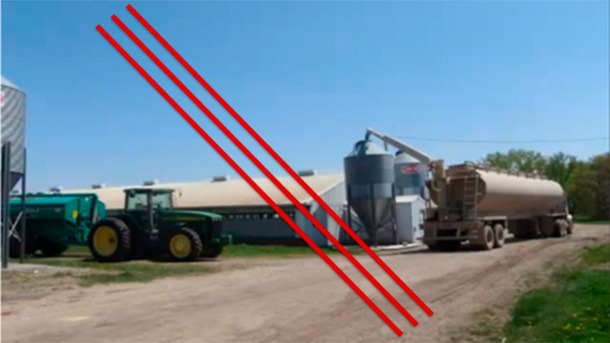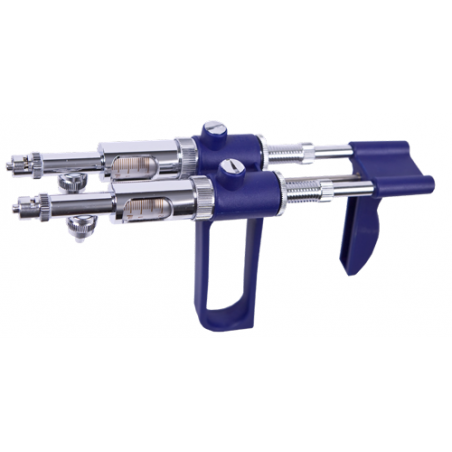It is no secret porcine epidemic diarrhea virus (PEDV) entered North America in 2013 and spread quickly through that swine industry. Though some production systems had successfully utilized biosecurity programs (including remote locations) to prevent the introduction of Porcine Reproductive and Respiratory Syndrome Virus and Mycoplasma hyopneumoniae, those programs seemed insufficient to prevent the rapid spread of PEDV. The new virus moved quickly through the US industry during the cold winter months of 2013-2014 and its pace did not slow until warmer summer months of 2014.
To some extent, the highly infective nature of this virus enabled it to circumvent established sanitation practices. A newborn piglet infected with PEDV provides billions of viral units in every gram of feces and only a small number of those units are needed to infect the next naïve piglet. Feces from a PEDV-shedding piglet diluted 1:100,000,000 can still infect naïve piglets. The cleaning and disinfection practices that historically produced a “good enough” or “clean enough” environment for other pathogens still left plenty of infective PEDV in trucks or farrowing rooms. Producers learned the value of hot water washing compared to cold water. To stop the movement of PEDV or to eliminate it from a facility, producers realized sanitation had to improve. The standards of sanitation had to rise to a new level to address PEDV.

Seeking to further reduce the spread of PEDV, producers and veterinarians also made improvements in other areas of biosecurity. Those changes focused on
- Feed ingredients, processes and deliveries.
- Segregation of transportation equipment.
- Entry processes for people and materials.
- Effluent management.
- Disposal of deadstock.
Feed.
PEDV is spread by fecal-oral transmission, meaning a naïve animal ingests the infective fecal matter shed by an infected pig. Contaminated ingredients or complete feed is an obvious potential source of exposure. Veterinarians critiqued feed ingredients and ingredient sources for potential cross-contamination. The process of receiving bulk ingredients (e.g. corn and soybean meal) drew special attention to prevent contamination with ice and sludge that might harbor viruses. At feed mills, cross-traffic between incoming ingredient trucks/drivers with outgoing feed delivery trucks/drivers was discouraged or eliminated. In some cases, mills or equipment were dedicated to uninfected versus infected herds. Stronger attention was paid to delivery schedules and routes so healthy herds and higher-value populations received feed before infected herds, with cleaning and disinfection before returning to the healthy herds. In some cases, producers added a specific decontamination ingredient (e.g. formalin) to the complete feed to further reduce risk.
Transport equipment.
Beside the focus on transport sanitation, some producers/systems segregated their truck fleets. For example, a system might separate equipment between infected and uninfected sites. Those trucks which came in contact with terminal markets or collection points might be segregated from trucks hauling breeding stock or internal movements.
Entry of people and materials.
To further reduce the potential for introduction by people or materials coming onto the farms, more attention was paid to entry processes. Protocols were written and enforced. On-site decontamination rooms were used for all incoming materials and “Danish entry systems” were used to further separate dirty footwear and clothing from the clean production areas.
Effluent management.
Because PED is a fecal-oral disease, effluent management received additional scrutiny. Producers realized the biosecurity value of manure-handling equipment dedicated to a single site or flow or system to reduce the risk of lateral transmission. When it was necessary to share equipment, protocols and checklists were written and utilized to minimize exposure between sites. There should be no cross-traffic between the effluent management crew and their equipment with the caretakers, truck drivers or feed deliveries (image 1).

Image 1. Separation between feed and effluent is essential to control PEDV.
Deadstock disposal.
PEDV causes death. If moved off-site, those dead infected pigs and all people and equipment they contact are potential sources of infection. Carcass collection points for multiple production facilities are particularly risky. On-site burial, incineration and composting are the preferred methods to reduce disease transmission.
Across all aspects mentioned, enhanced communication and education were key elements. No conscientious caretaker or truck driver wants to spread disease. They do not want to make pigs sick, but sometimes people do not realize the impact their actions have on biosecurity and pig health. Preventing the spread of PEDV required a new level of attention to detail. Training was needed in all segments of the production chain.
Dealing with PEDV in 2013-2014 provided hard, painful lessons; but with those experiences, North American producers changed a variety of biosecurity practices and have experienced only a fraction of the cases in subsequent high-risk seasons. Time will tell if that success can be replicated again in the cold winter months ahead.





